Abstract
In conditional-discrimination procedures with three sets of stimuli, A, B, and C, three stimuli per set (A1A2A3, B1B2B3, and C1C2C3), subjects (children and adults) learned to select Set-B and Set-C comparisons conditionally upon Set-A samples (A1B1, A1C1, A2B2, A2C2, A3B3, A3C3). If the conditional-discrimination procedures also generated equivalence relations, three 3-member stimulus classes would be demonstrable, A1B1C1, A2B2C2, and A3B3C3. In addition to these three sets, the present experiments used three other sets of stimuli--D, E, and F. The subjects learned to select Set-E and Set-F comparisons conditionally upon Set-D samples (D1E1, D1F1, D2E2, D2F2, D3E3, D3F3). This established a second group of three 3-member stimulus classes, D1E1F1, D2E2F2, and D3E3F3. In all, two groups of three 3-member classes were established by teaching subjects 12 conditional discriminations. The two groups of 3-member classes were then combined (successfully for 5 of 8 subjects) into a single group of three 6-member classes by teaching the subjects three more conditional relations (E1C1, E2C2, and E3C3). With three other children, enlarging the classes one member at a time also produced 6-member classes. As a consequence of class formation, 60 untrained conditional relations emerged from 15 that had been explicitly taught. Six of the subjects also proved capable of naming the stimuli consistently in accord with their class membership, but two subjects demonstrated class formation even in the absence of consistent naming.
Full text
PDF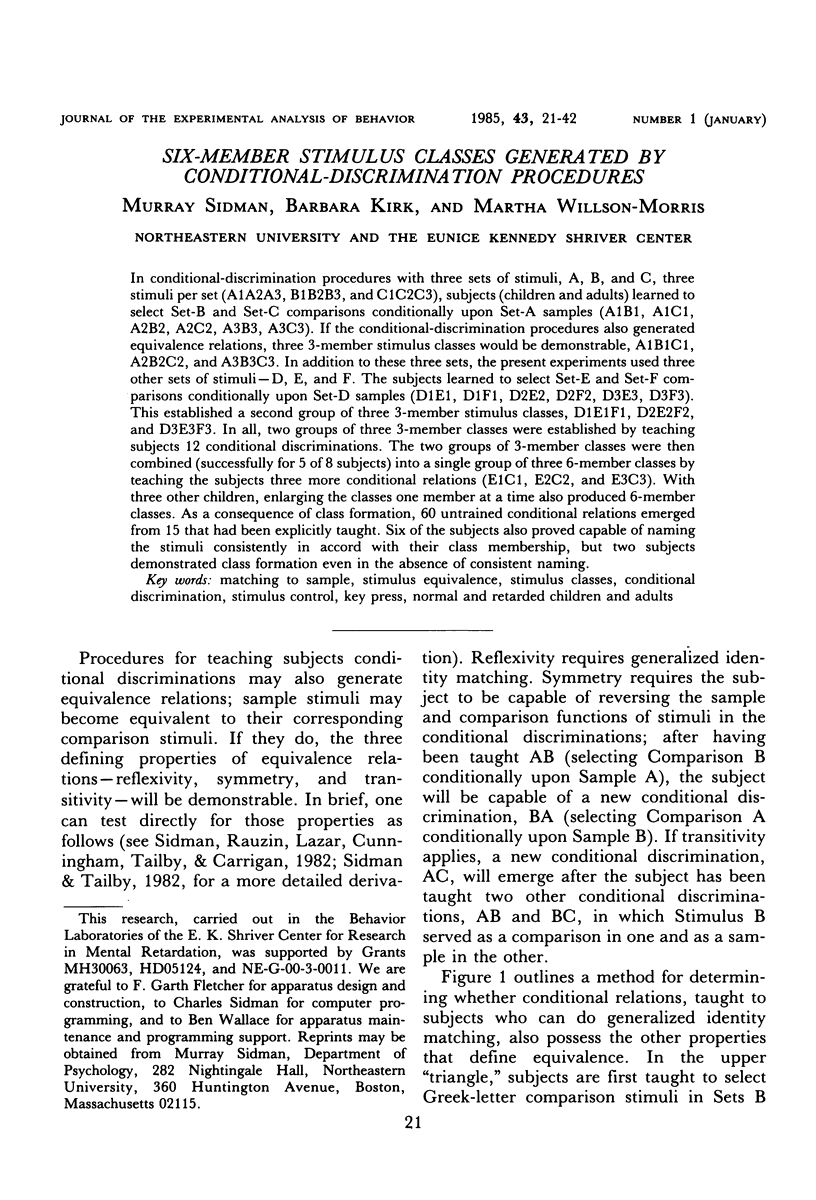



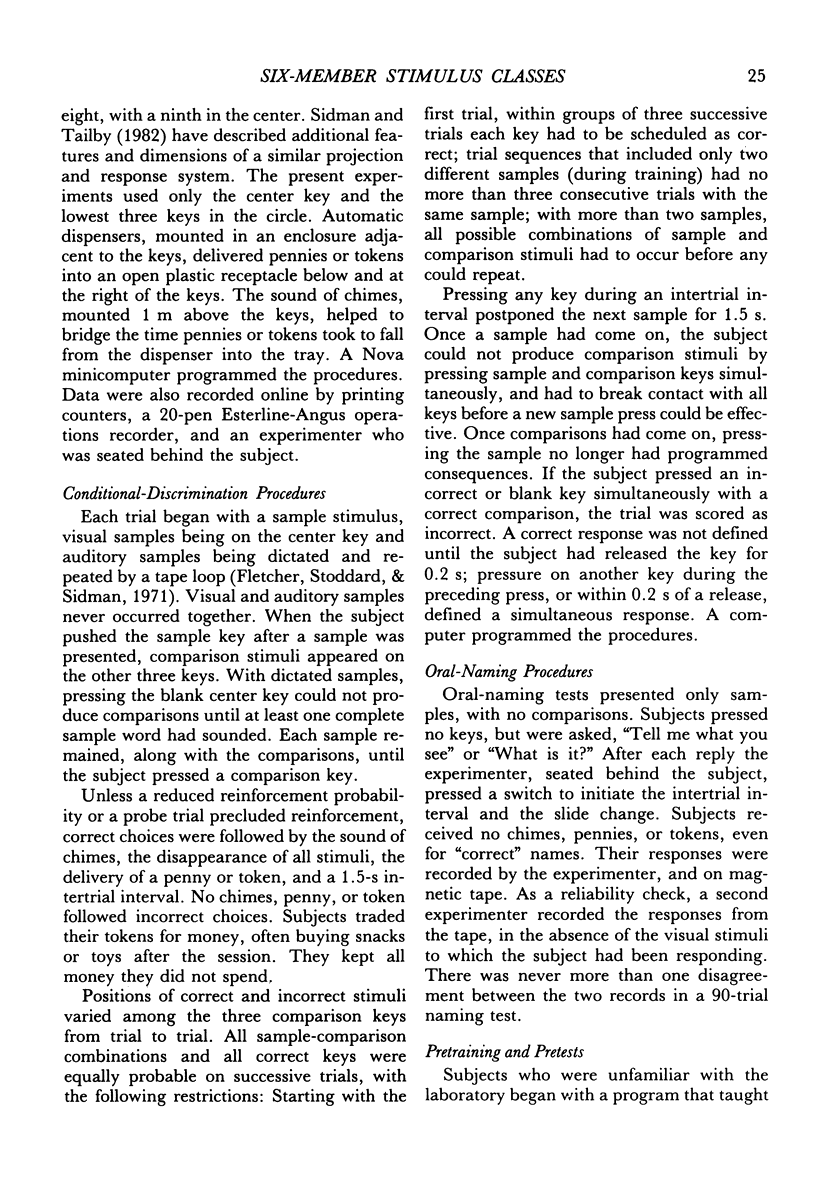

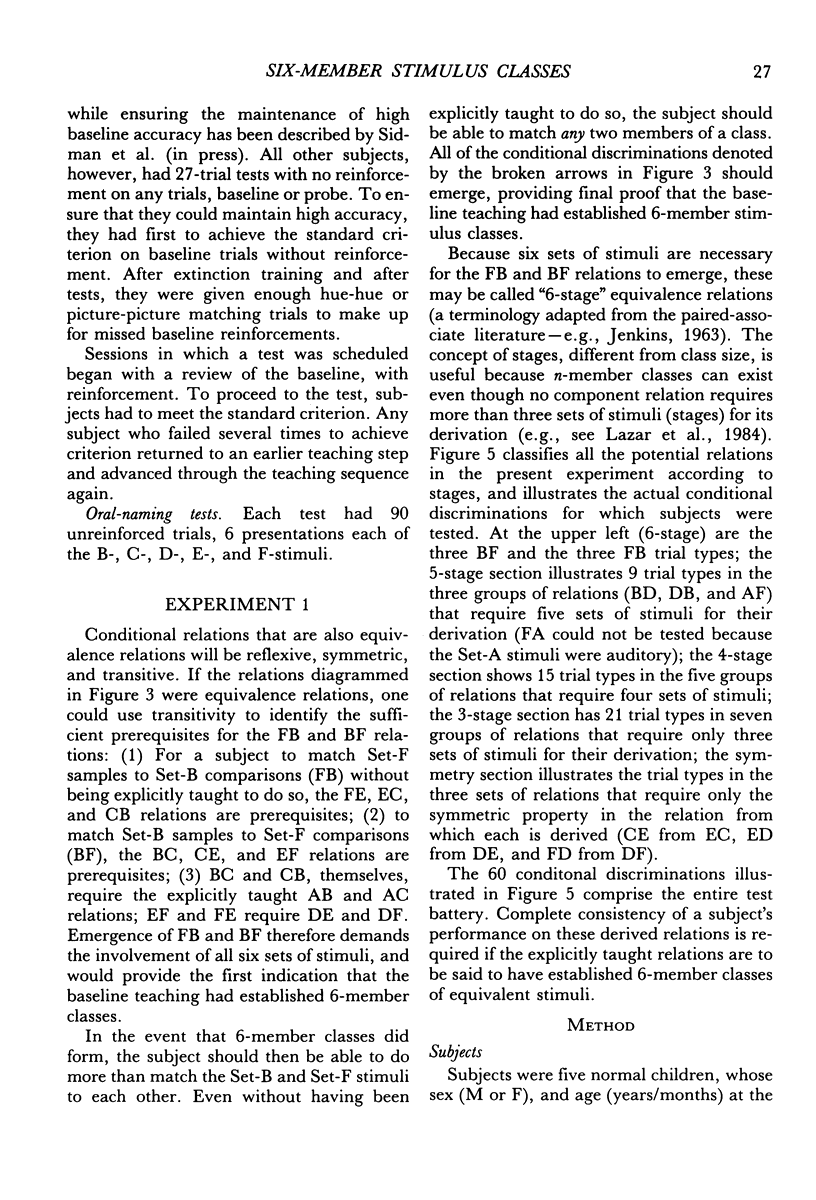
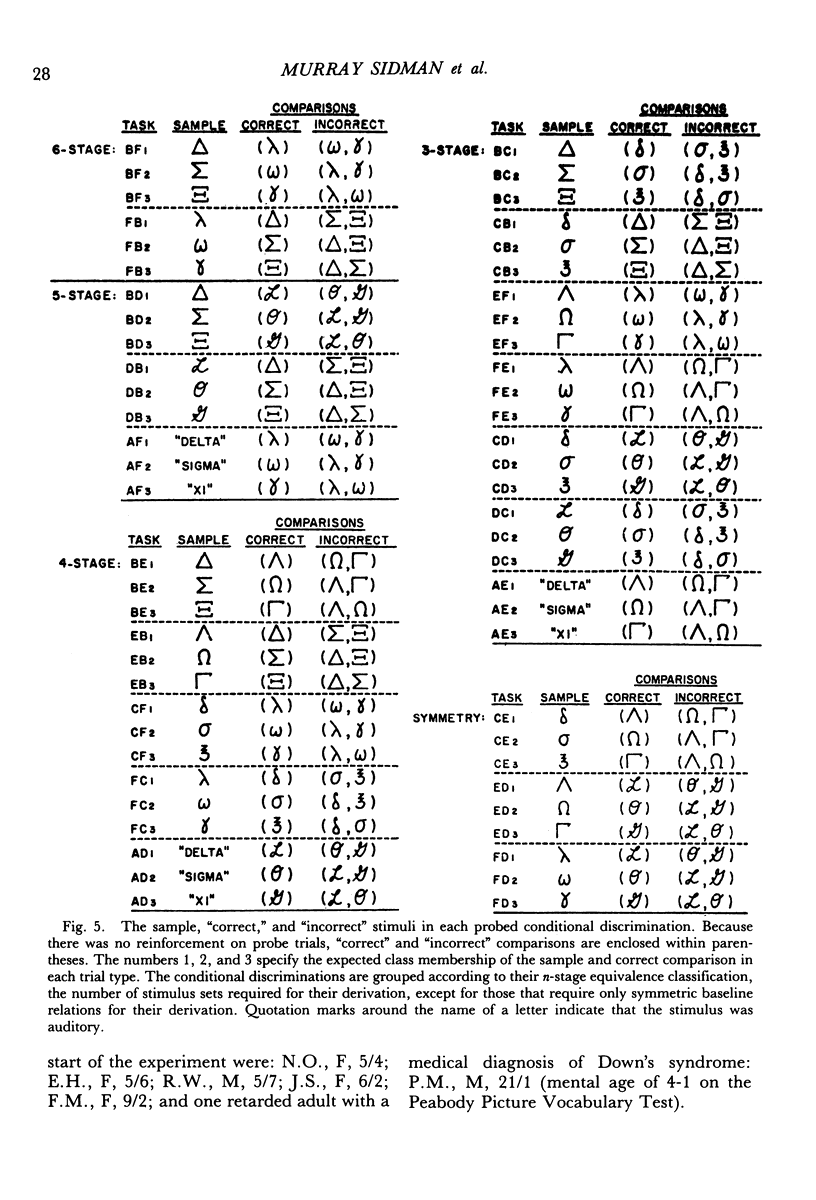
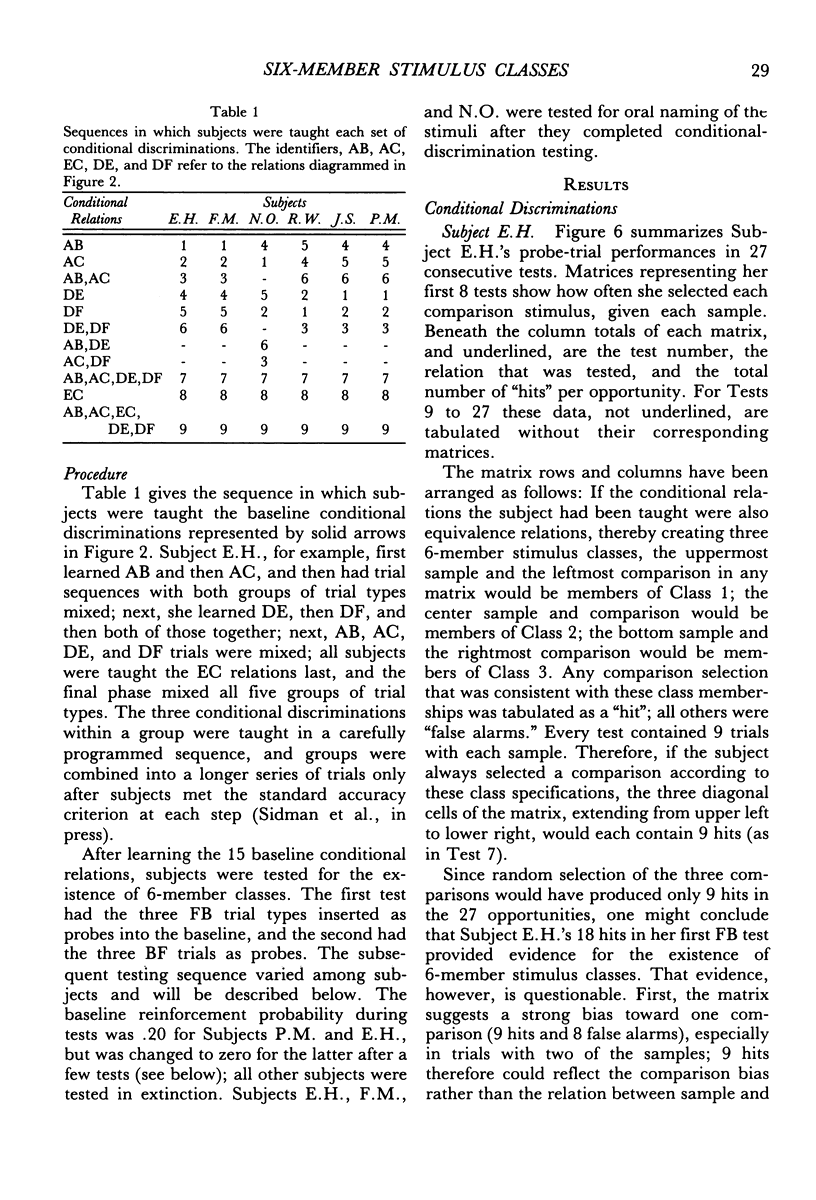
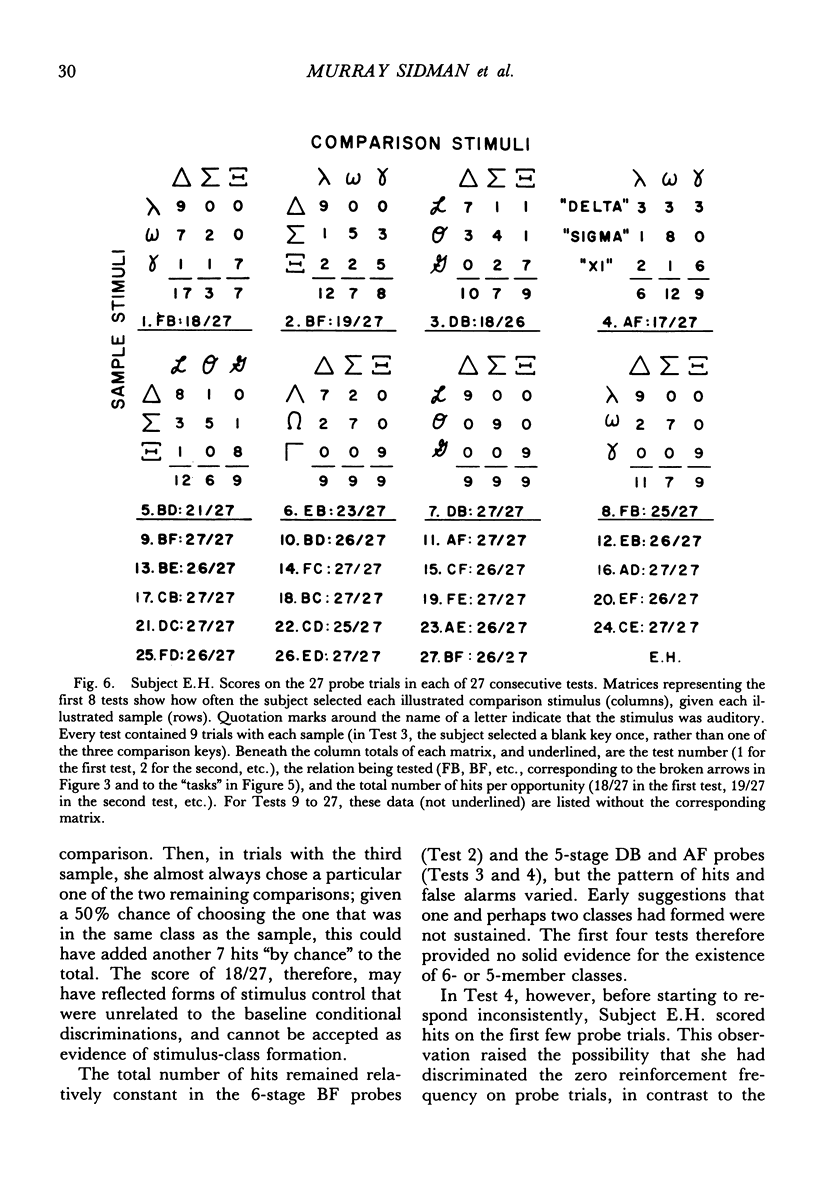
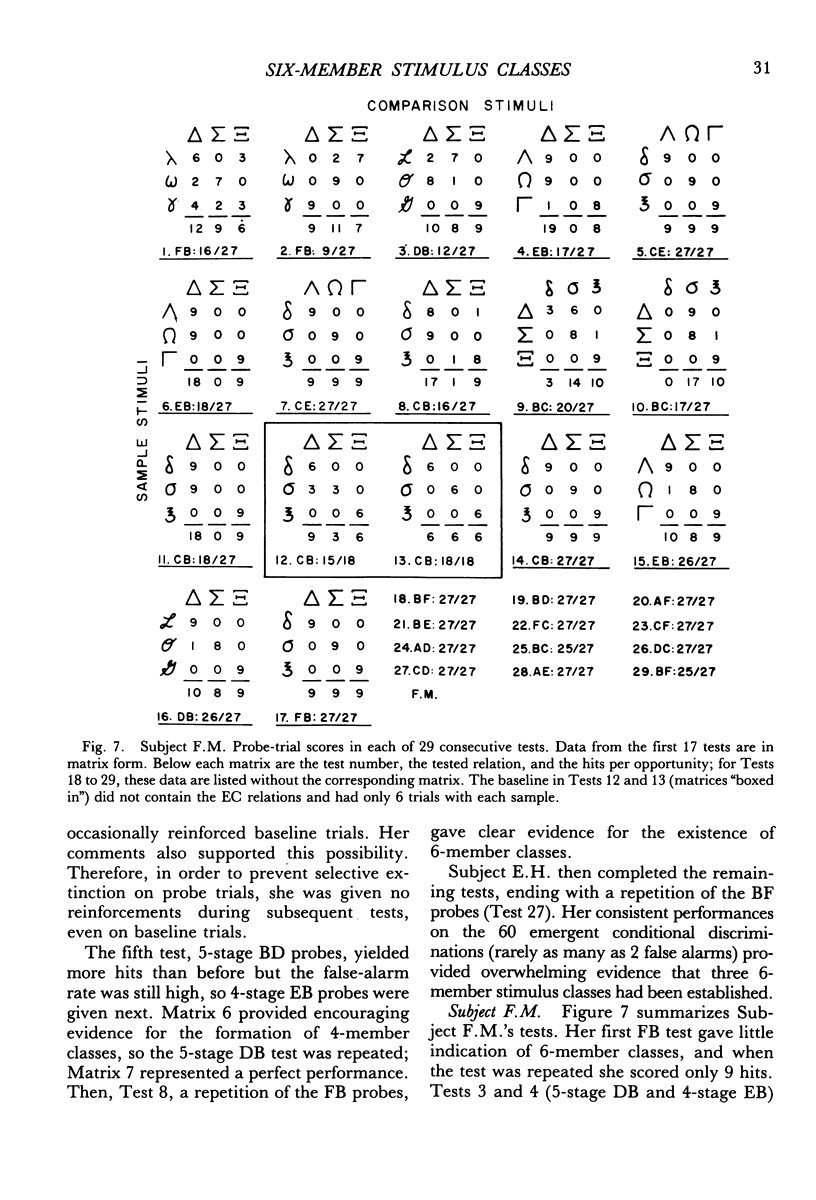
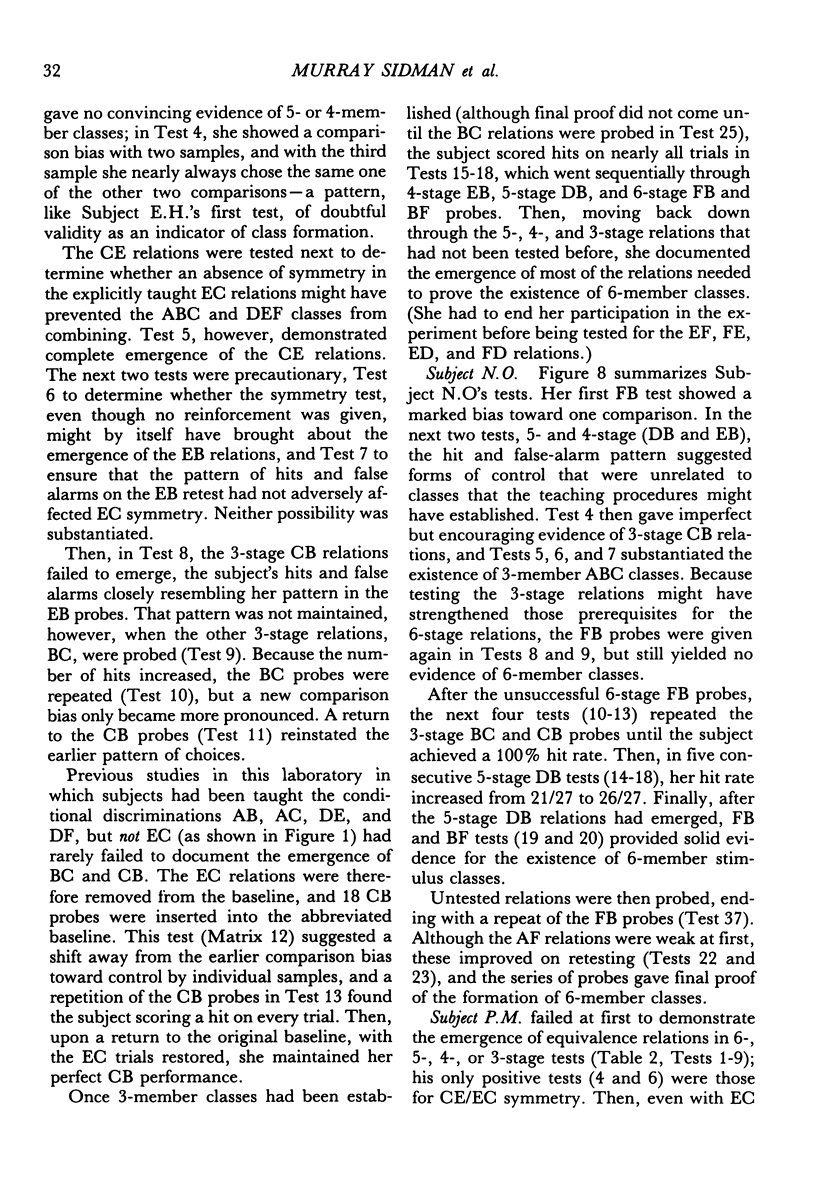
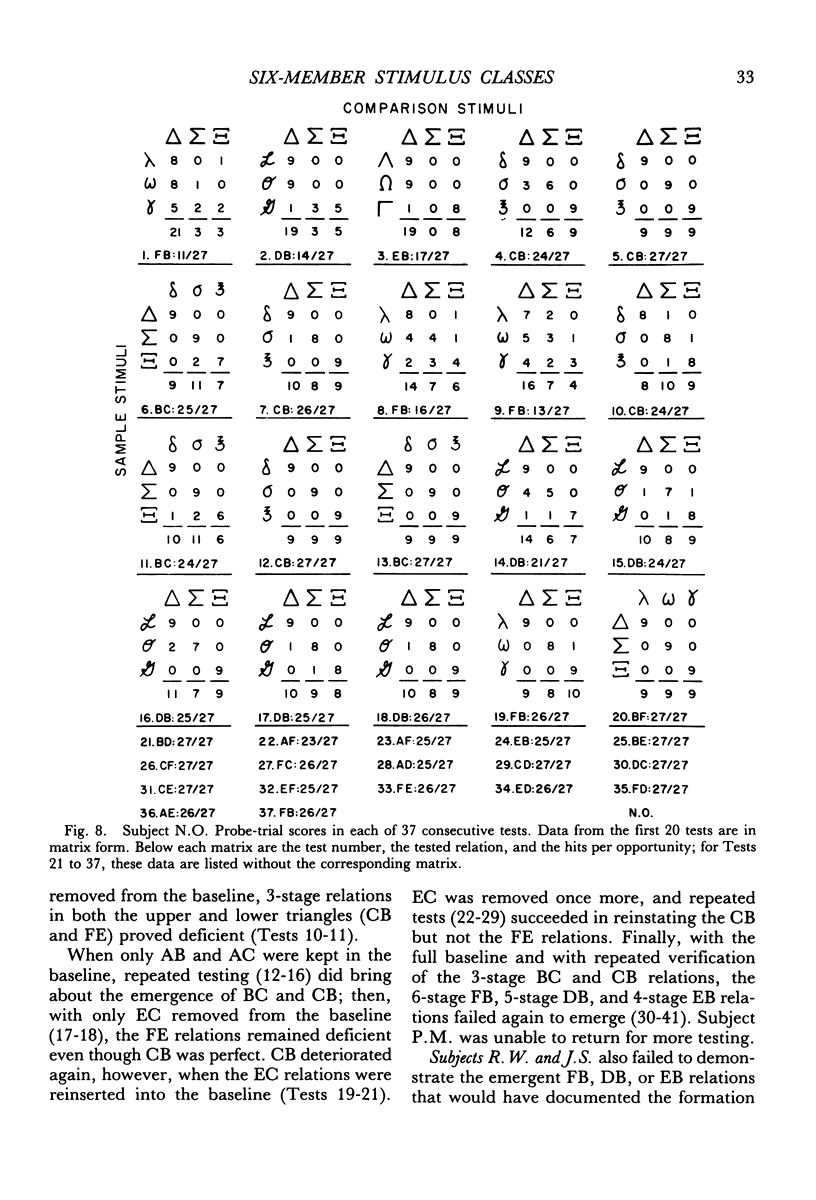
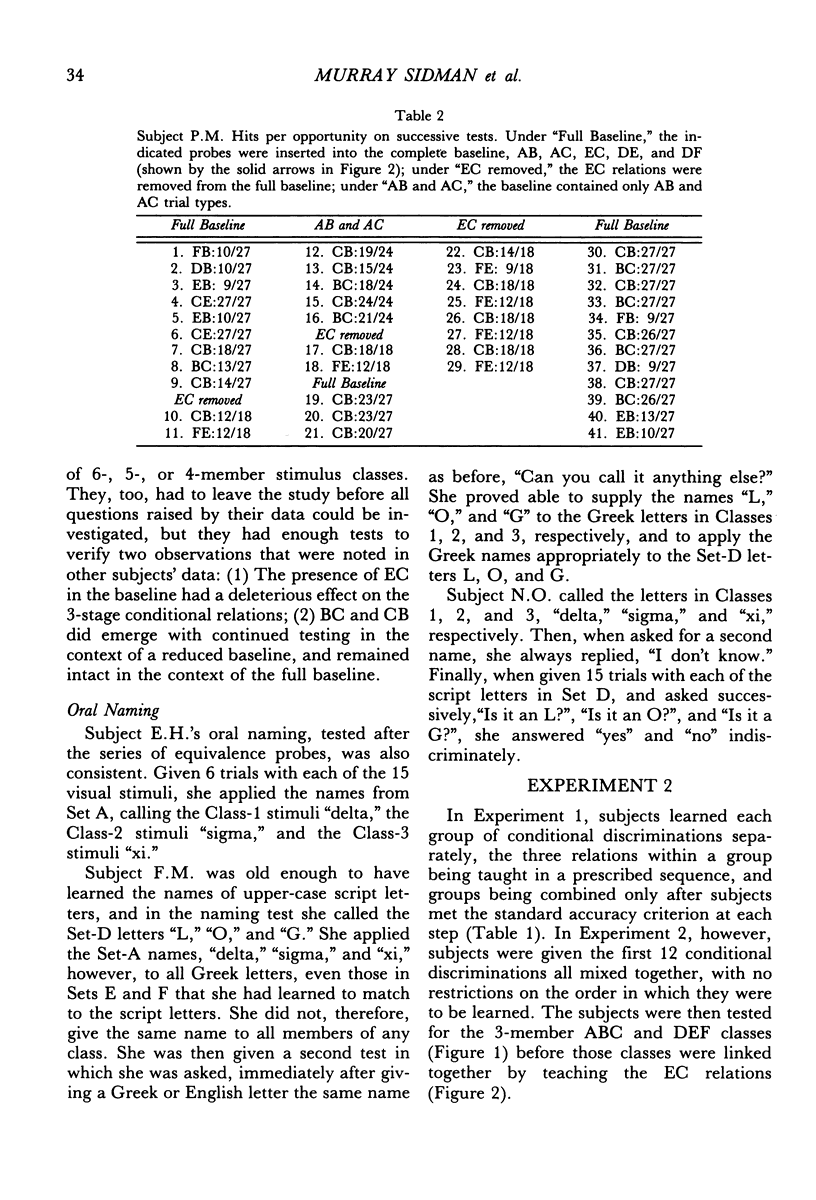

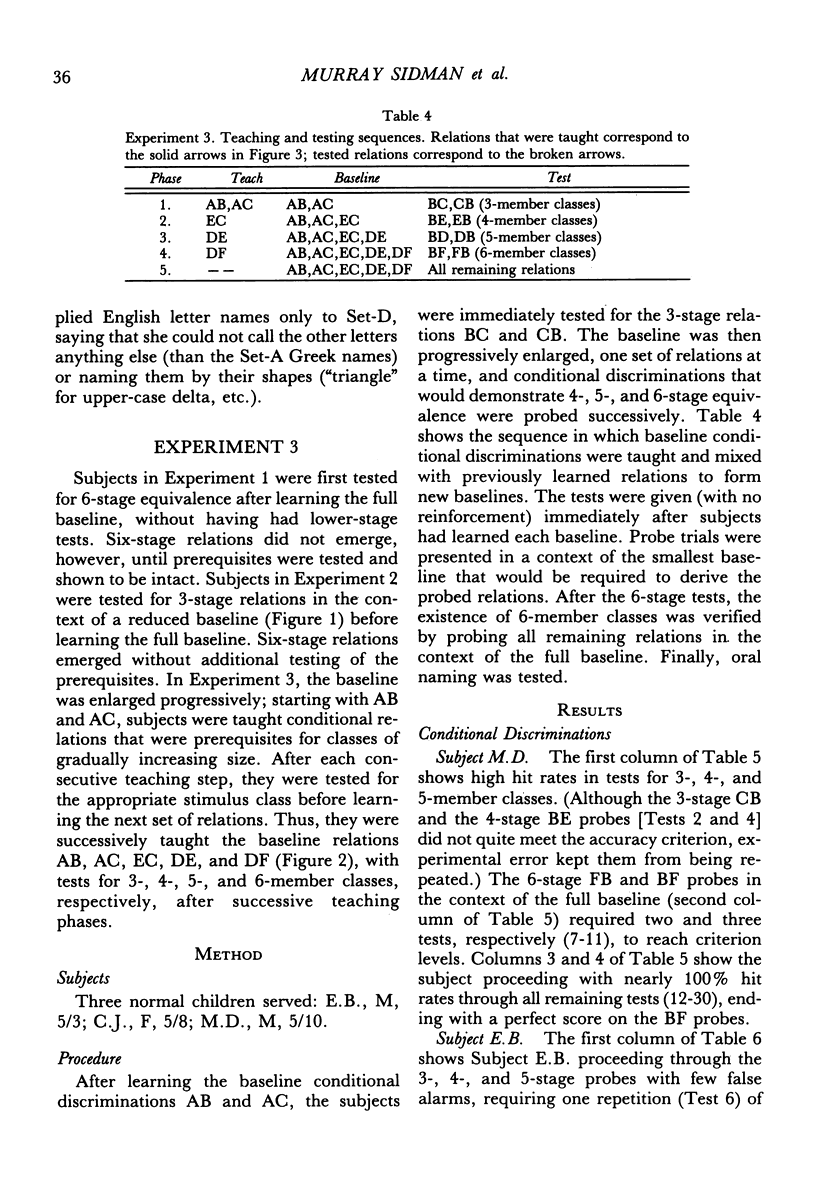
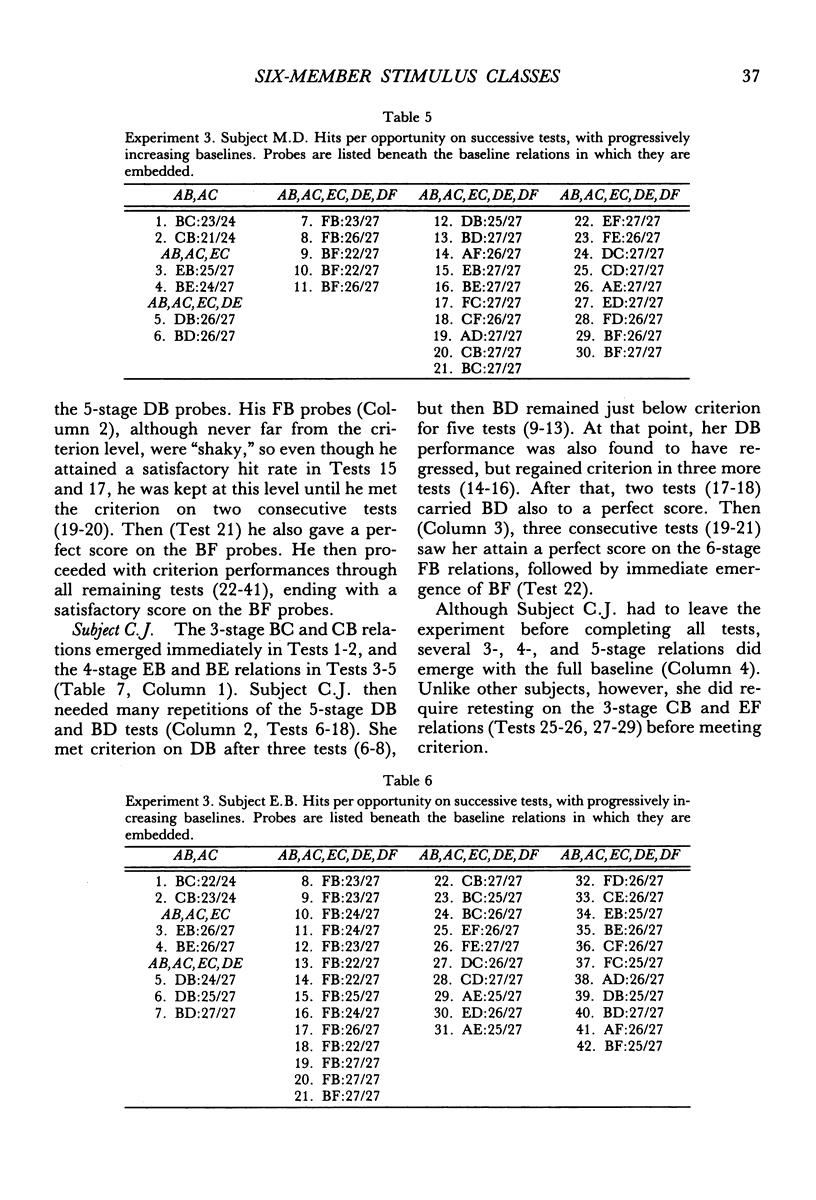
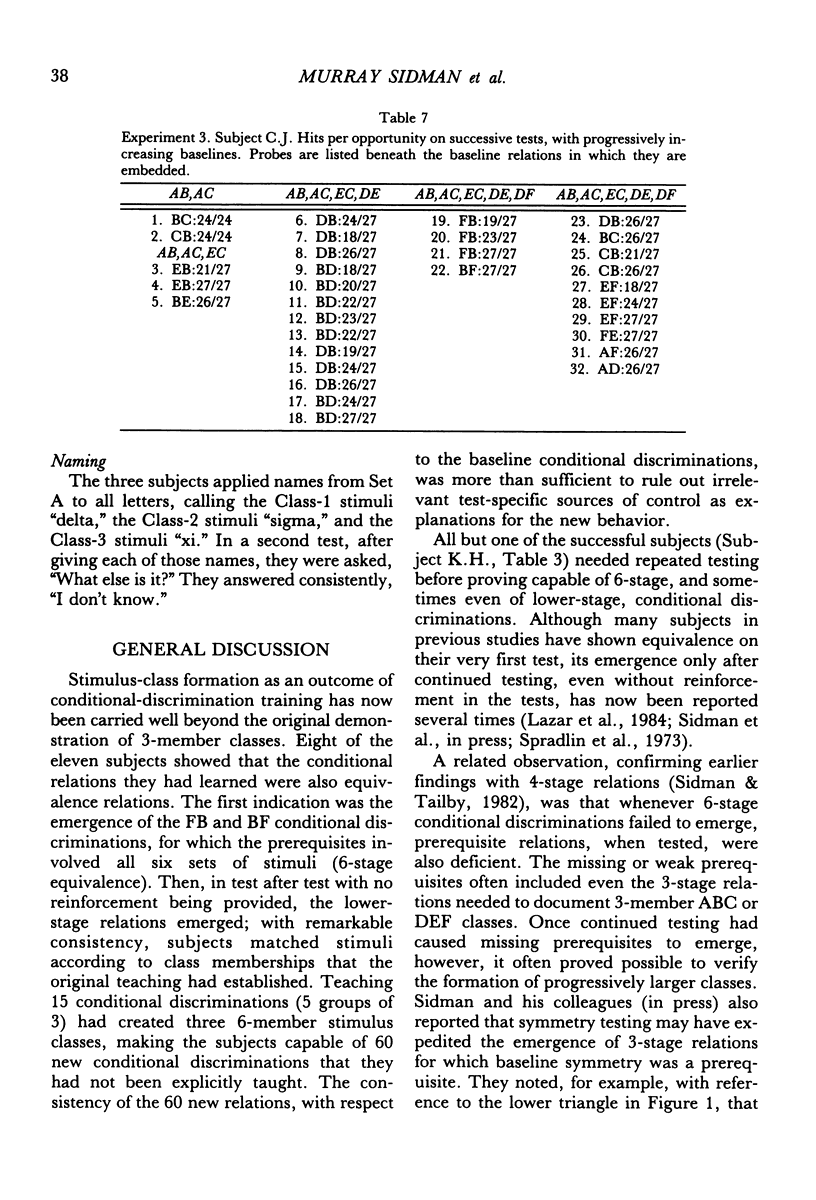
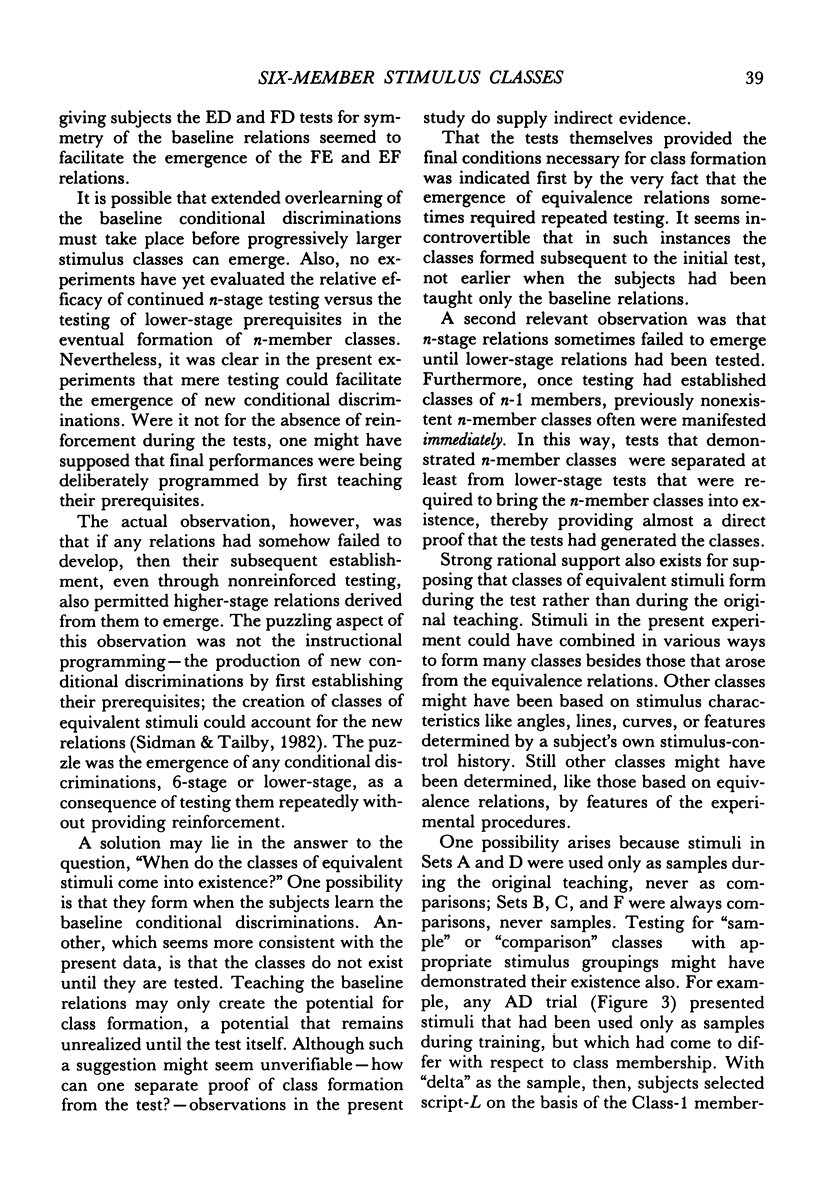

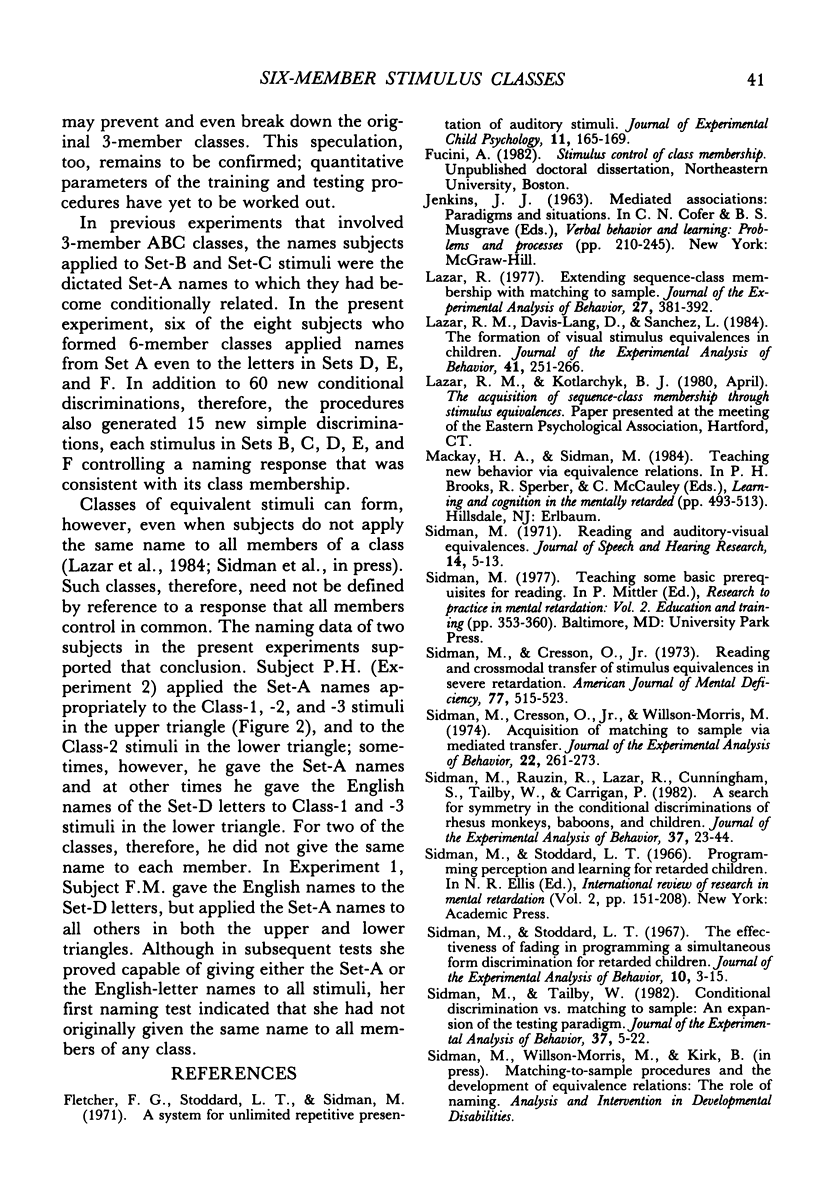
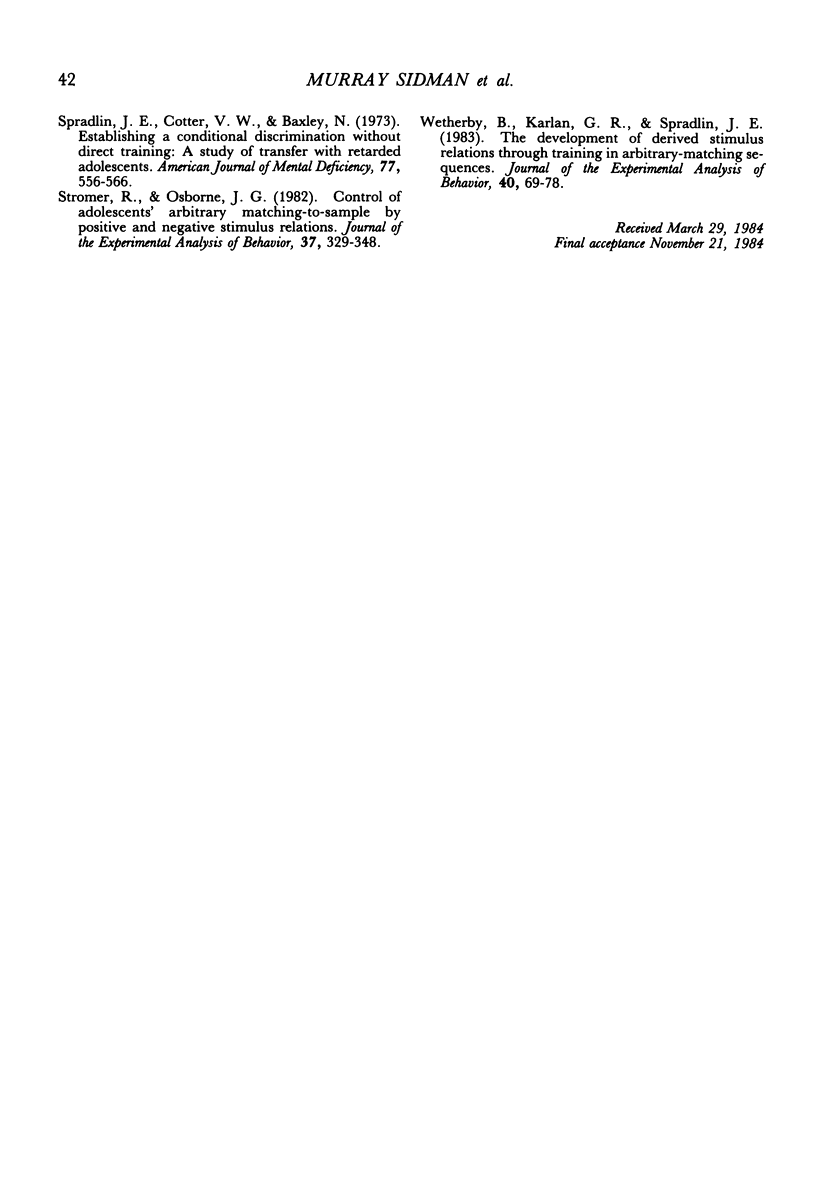
Selected References
These references are in PubMed. This may not be the complete list of references from this article.
- Lazar R. M., Davis-Lang D., Sanchez L. The formation of visual stimulus equivalences in children. J Exp Anal Behav. 1984 May;41(3):251–266. doi: 10.1901/jeab.1984.41-251. [DOI] [PMC free article] [PubMed] [Google Scholar]
- Lazar R. Extending sequence-class membership with matching to sample. J Exp Anal Behav. 1977 Mar;27(2):381–392. doi: 10.1901/jeab.1977.27-381. [DOI] [PMC free article] [PubMed] [Google Scholar]
- Sidman M., Cresson O., Jr Reading and crossmodal transfer of stimulus equivalences in severe retardation. Am J Ment Defic. 1973 Mar;77(5):515–523. [PubMed] [Google Scholar]
- Sidman M., Cresson O., Jr, Willson-Morris M. Acquisition of matching to sample via mediated transfer. J Exp Anal Behav. 1974 Sep;22(2):261–273. doi: 10.1901/jeab.1974.22-261. [DOI] [PMC free article] [PubMed] [Google Scholar]
- Sidman M., Rauzin R., Lazar R., Cunningham S., Tailby W., Carrigan P. A search for symmetry in the conditional discriminations of rhesus monkeys, baboons, and children. J Exp Anal Behav. 1982 Jan;37(1):23–44. doi: 10.1901/jeab.1982.37-23. [DOI] [PMC free article] [PubMed] [Google Scholar]
- Sidman M. Reading and auditory-visual equivalences. J Speech Hear Res. 1971 Mar;14(1):5–13. doi: 10.1044/jshr.1401.05. [DOI] [PubMed] [Google Scholar]
- Sidman M., Stoddard L. T. The effectiveness of fading in programming a simultaneous form discrimination for retarded children. J Exp Anal Behav. 1967 Jan;10(1):3–15. doi: 10.1901/jeab.1967.10-3. [DOI] [PMC free article] [PubMed] [Google Scholar]
- Sidman M., Tailby W. Conditional discrimination vs. matching to sample: an expansion of the testing paradigm. J Exp Anal Behav. 1982 Jan;37(1):5–22. doi: 10.1901/jeab.1982.37-5. [DOI] [PMC free article] [PubMed] [Google Scholar]
- Spradlin J. E., Cotter V. W., Baxley N. Establishing a conditional discrimination without direct training: a study of transfer with retarded adolescents. Am J Ment Defic. 1973 Mar;77(5):556–566. [PubMed] [Google Scholar]
- Stromer R., Osborne J. G. Control of adolescents' arbitrary matching-to-sample by positive and negative stimulus relations. J Exp Anal Behav. 1982 May;37(3):329–348. doi: 10.1901/jeab.1982.37-329. [DOI] [PMC free article] [PubMed] [Google Scholar]
- Wetherby B., Karlan G. R., Spradlin J. E. The development of derived stimulus relations through training in arbitrary-matching sequences. J Exp Anal Behav. 1983 Jul;40(1):69–78. doi: 10.1901/jeab.1983.40-69. [DOI] [PMC free article] [PubMed] [Google Scholar]


